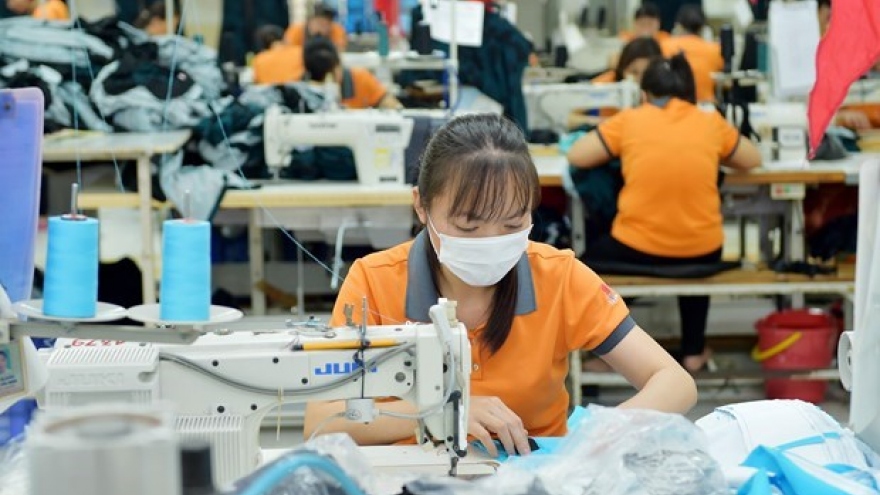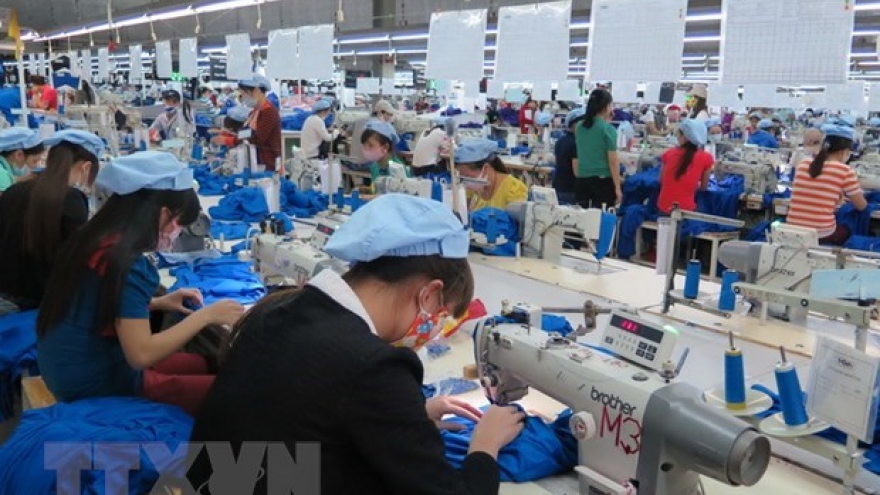EVFTA enables brighter outlook for textile industry
VOV.VN - The newly-signed EU - Vietnam Free Trade Agreement is expected to give an added impetus for Vietnamese apparel exports to the trading block, insiders have claimed.
 |
| Garment and textile exports to EU markets reach more than US$4 billion in 2018. |
The EU - Vietnam Free Trade Agreement (EVFTA) and EU - Vietnam Investment Protection Agreement (EVIPA) were both signed by Vietnam and the EU in Hanoi on June 30. The Vietnamese Ministry of Industry and Trade described the EVFTA and EVIPA as comprehensive and high-quality deals that will yield equal benefits for the signatories.
Most notably, the garment and textile sector is believed to enjoy substantial benefits from the EVFTA as the deal represents a boost to made-in-Vietnam clothing brands in EU markets.
The EU was the second largest export market of the Vietnamese textile industry with its export turnover from EU markets reaching more than US$4 billion in 2018.
Le Tien Truong, general director of the Vietnam National Textile and Garment Group, said that Vietnamese garment firms could potentially gain an increased slice of the EU market once tariff cuts under the EVFTA come into effect.
Despite this, benefits from the EVFTA would not be felt immediately, Truong said, stressing the need to pursue a long term strategy in order to utilize them.
The trade pact stipulates stringent requirements on the origin of products. As a result, more concerted attempts must be made to increase the localization rate and capacity of domestic firms, especially those of clothing manufacturers.
It enables Vietnamese firms to enjoy larger access to other countries which have inked an FTA with the EU, particularly the Republic of Korea (RoK). Made-in-RoK clothing meets origin requirement as stated in the EVFTA, thus allowing domestic firms to team up with Korean partners to ensure orders from the trading block, Truong added.
Than Duc Viet, general director of Garment 10 Corporation, revealed that his firm have sketched out a blueprint to develop a domestic supply chain with the aim of maximizing EVFTA benefits.
Garment 10 Corporation is therefore well prepared to make the provision of valid products by nurturing partnerships with domestic clothing suppliers in order to meet origin requirements set by the EU, Viet said, noting this looks to make May 10 products eligible to tariff incentives from the block.
Despite these potential benefits, Vietnamese garment firms are predicted to face major challenges from an overwhelming wave of EU imports into the domestic market and fierce competition from a range of capable European rivals.
In fact, local garment enterprises have made bold investments in expanding their material production in a bid to seize the various business opportunities from the FTAs which Vietnam has signed.
However, insiders have still urged domestic firms to take prompt actions to secure their material sources in line with the EU’s origin rules.


